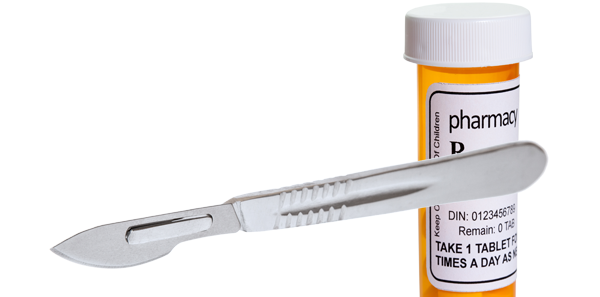
Surgery has always been assumed to be the standard treatment for appendicitis, but recent research suggests that nonoperative approaches can be effective. Now, a large randomized controlled trial (RCT) is adding to the evidence that antibiotics are a viable choice for managing appendicitis. The results of the Comparison of Outcomes of antibiotic Drugs and Appendectomy (CODA) study of nonoperative treatment of appendicitis were recently published in the New England Journal of Medicine.1
Explore This Issue
ACEP Now: Vol 39 – No 11 – November 2020ACEP Now Medical Editor in Chief Jeremy Samuel Faust, MD, MS, FACEP, recently discussed CODA’s results with one of the trial’s two co-principal investigators (PI), David A. Talan, MD, FACEP, FIDSA, an emergency and infectious diseases physician from the Ronald Reagan UCLA Medical Center department of emergency medicine in Los Angeles and a regular contributor to ACEP Now. (David R. Flum, MD, MPH, in the department of surgery at the University of Washington in Seattle, is the other co-PI.)
JF: There have been previous studies of nonoperative treatment of appendicitis. What’s different about the CODA trial?
DT: It’s the largest RCT of adults, 1,552 versus 530 participants for the Finnish Appendicitis Acuta (APPAC) trial.2 In the APPAC trial, surgeries were generally open whereas in CODA they were laparoscopic. It’s the first large U.S. study. CODA enrolled all patients with localized appendicitis who would typically go for appendectomy, including those with appendicolith on imaging (about 25 percent) who were excluded in the APPAC trial. CODA’s primary outcome was a 30-day general health measure called EQ-5D. Also, there was EM involvement with an EM site PI at each of the 25 hospitals. CODA’s results were released early because of their potential importance during the COVID-19 pandemic.
JF: Can you summarize CODA’s findings?

Dr. David A. Talan
DT: CODA found nonoperative treatment of appendicitis to be noninferior to appendectomy in terms of 30-day EQ-5D, which reflects comfort, self-care, mobility, activity, and happiness. Like studies before it, CODA found that most patients treated with antibiotics avoided surgery. Antibiotic treatment was safe, with no more serious adverse events, which were rare. Despite the fear of appendiceal rupture and death if the appendix was not removed as soon as possible, no fatalities occurred. Appendectomy rates through 90 days were more than in past trials—25 percent in those without appendicolith (versus 19 percent for the APPAC trial) and 41 percent in those with appendicolith. This was only through 90 days; studies have found recurrence occurs through two years but then seems to level off.3 The appendicolith subgroup also had more complications, like abscess requiring percutaneous drainage in 7 percent versus 1 percent in the surgery group. Antibiotic-treated patients returned to work more than three days sooner and, not surprisingly with occasional appendicitis recurrence, had more subsequent outpatient visits and admits.
JF: What are the most important findings for emergency physicians?
DT: A unique aspect of CODA was that if antibiotic-treated patients met the usual discharge criteria following administration of long-acting parenteral antibiotic regimen, they could be discharged home from the emergency department and have outpatient management with completion of oral antibiotics over the next nine days (not unlike how many cases of acute uncomplicated diverticulitis are now managed). This was based on a pilot study experience we described in 2017 in which over 90 percent of antibiotic-treated patients had ED discharge and all patients resolved their acute episode of appendicitis.4 In the CODA trial, about 50 percent had ED discharge. Sites varied a lot with regard to the rate of ED discharge, from never doing it to more than 80 percent going home at some hospitals. This may have reflected physician comfort and experience with antibiotic treatment.
JF: What types of antibiotic regimens did you use in the emergency department?
DT: Either IV ertapenem alone (1 gram) or ceftriaxone (1 gram) and a daily-dosed metronidazole (1,500 mg). For oral treatment, we used either a fluoroquinolone (eg, levofloxacin 750 QD) and metronidazole (500 mg TID) or an advanced-generation cephalosporin (eg, cefdinir 300 mg BID) and metronidazole. We avoided amoxicillin/clavulanate because of high E. coli resistance rates.
JF: How might CODA’s results be helpful with the COVID-19 pandemic and upcoming flu season?
DT: We forget that back in December, like every year, our hospitals were full and emergency departments were packed beyond capacity. If COVID-19 remains uncontrolled in places or resurges with schools opening, it will be critically important to have new strategies to manage patients without hospital admission. CODA showed that antibiotics remain a safe option and ED discharge is a reasonable disposition in selected patients. The expansion of telemedicine should facilitate follow-up care and minimize subsequent ED and office visits.
JF: These RCTs were all nonblinded. How do we know that biases did not unduly influence CODA’s results?
DT: This was an open trial, and surgeons who managed participants may have brought their biases in caring for these patients. As is acknowledged in the paper, for example, while CODA recommended giving antibiotics at least 48 hours to work, in 11 percent of cases, patients were taken for appendectomy before this time. Whether conditions viewed as high-risk, like appendicolith, might have led to a lower threshold for appendectomy than necessary among antibiotic-treated patients is unclear. Also, the protocol did not specify how to manage patients’ appendix-related concerns. Some, after full recovery, were given appendectomy when there was no evidence of acute appendicitis to, for example, address anxiety about a future recurrence or nonspecific abdominal complaints. The strength of this approach is that it provides a more real-world picture of how nonoperative treatment of appendicitis is used in the United States, but a limitation is that we may not know how effective antibiotics could be. A blinded trial with a sham operation is unlikely.
JF: How do you think doctors and patients will process these results?
DT: I think people generally will find what they want in CODA, either way. If one is comfortable with surgery, then appendectomy is a simple, safe, and permanent solution, and CODA’s 90-day antibiotic-appendectomy rate of about three in 10 overall, somewhat higher than past trials, may seem too high. Also, some may worry that with antibiotic treatment, there is an extremely rare chance (about 1 percent) that a coincident appendiceal cancer will be missed, at least initially; this is of greater risk in older adults where the risk of surgical mortality, albeit low to begin with, is greater.5 On the other hand, if one’s aim is to avoid surgery and hospitalization, and return patients to work sooner, then one sees this instead as a seven in 10 chance to not get general anesthesia and your rectus muscles cut. I expect more hesitancy to recommend nonoperative treatment of appendicitis in patients with appendicolith on imaging, although surgery rates with antibiotics were still much lower overall in this subgroup. It will also take some time for many patients (and physicians) to unlearn what we have taught them for decades—“without emergency surgery, your appendix will explode and kill you”—so that they feel comfortable with the idea of nonoperative treatment. Even among those who respond, many experience anxiety about any mild abdominal pain being a recurrence. I suppose health economists and insurers could push for initial treatment with antibiotics, with ED discharge in most and appendectomy only if no response or for recurrence. Recurrences could even be re-treated with antibiotics, which has been done successfully.
JF: Is there anything on which those in favor of nonoperative treatment of appendicitis and those against it can agree?
DT: Yes. After ED evaluation establishes the diagnosis of acute, localized appendicitis, in the vast majority of patients who are stable and without signs of sepsis, we can abandon calling this an abdominal “emergency”—or even urgency. All patients should be started on antibiotics early and have their pain controlled. They should be offered both treatment options and informed of the advantages and disadvantages of appendectomy and antibiotic-only treatment. Emergency physicians can engage their patients in these discussions once the diagnosis is established. Some patients will choose surgery and be admitted as usual. Some will choose antibiotics, and of these, many can be discharged from the emergency department with close follow-up. And some will not be sure and can be started on antibiotics and followed before a decision is made. Regardless, our surgeon colleagues can get a good night’s rest and see the patient in the morning or, in many cases, later in their office.
Pages: 1 2 | Single Page




No Responses to “Surgery or Antibiotics for Appendicitis?”